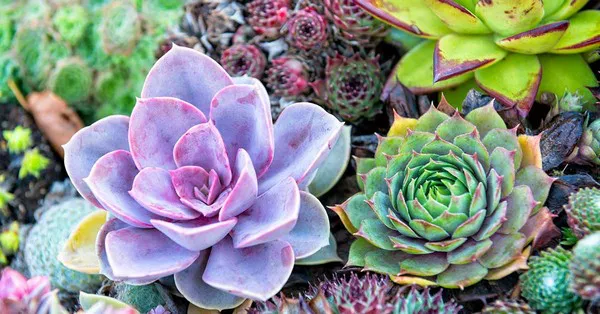Succulents, renowned for their unique ability to store water in their fleshy leaves, have gained immense popularity in the realm of gardening and interior decoration. While most succulents are characterized by their compact and low-growing nature, there is a captivating category that defies this norm – tall growing succulents. These striking plants not only add vertical interest to gardens and living spaces but also present distinct care requirements and aesthetic possibilities. In this article, we delve into the world of tall growing succulents, discussing their varieties, care guidelines, and the aesthetic appeal they bring.
Varieties of Tall Growing Succulents
Contrary to the typical perception of succulents as small and compact plants, certain species exhibit a remarkable propensity to grow tall, reaching heights that can rival conventional garden plants. Some of the noteworthy tall succulent varieties include:
1. Euphorbia trigona (African Milk Tree)
The Euphorbia trigona, commonly known as the African Milk Tree, is a dramatic succulent that can grow up to 6 feet tall. With its multiple branches lined with rows of spines and leaves, it resembles a cactus but is actually a succulent. Its upright growth and striking geometric form make it a favorite among succulent enthusiasts.
2. Aloe Dichotoma (Quiver Tree)
Native to Southern Africa, the Aloe Dichotoma, or Quiver Tree, is a tree-like succulent that can reach heights of 15 to 30 feet. Its distinct forked branches and smooth gray bark create an impressive silhouette against various backdrops.
3. Agave americana (Century Plant)
Known for its long, arching leaves with serrated edges, the Agave americana, or Century Plant, can grow up to 6 feet tall. While it may take several years to reach this height, its striking and bold form makes it a central piece in many succulent gardens.
4. Yucca elephantipes (Spineless Yucca)
The Yucca elephantipes, also called the Spineless Yucca or Giant Yucca, can grow up to 30 feet tall in its natural habitat. Its long, sword-like leaves and tolerance to indoor conditions have made it a popular choice for interior decoration.
5. Beaucarnea recurvata (Ponytail Palm)
Despite its name, the Beaucarnea recurvata, or Ponytail Palm, is not a true palm but a succulent. It can grow up to 20 feet tall, featuring a swollen trunk at its base that tapers into a cascade of long, slender leaves resembling a ponytail.
Caring for Tall Growing Succulents
Tall growing succulents possess distinct care requirements owing to their size and growth patterns. Here are some essential care guidelines to ensure the health and vitality of these captivating plants:
1. Light and Location
Most tall succulents are adapted to bright and sunny conditions. Providing them with ample sunlight, either by placing them in direct sunlight or providing bright indirect light, is crucial for their growth. Indoor specimens may require regular rotation to ensure all sides receive adequate light.
2. Soil and Potting
A well-draining soil mixture is vital for tall growing succulents. A blend of cactus mix and perlite or sand promotes proper drainage and prevents root rot. Choosing a sufficiently large and sturdy pot is essential to accommodate the plant’s growth and prevent it from becoming top-heavy.
3. Watering
Tall succulents store water in their leaves and stems, allowing them to endure periods of drought. Watering should be infrequent but deep, allowing the soil to dry out completely between watering sessions. Overwatering can lead to root rot, especially in taller specimens.
4. Support and Pruning
As these succulents grow taller, they might require support to prevent them from bending or breaking due to their weight. Bamboo stakes or other forms of support can be gently inserted into the soil near the plant to provide necessary stability. Additionally, pruning dead or decaying leaves helps maintain the plant’s overall health and appearance.
5. Temperature and Humidity
Most tall succulents thrive in temperatures that range from 65°F to 85°F (18°C to 29°C). They can tolerate slightly cooler temperatures but are sensitive to frost. Indoor environments are usually suitable, but maintaining proper humidity levels can prevent issues like browning leaf tips.
Aesthetic Appeal and Design Possibilities
The inclusion of tall growing succulents in gardens and interior spaces offers exciting design opportunities. These unique plants can serve as focal points, adding vertical drama to arrangements that are often dominated by horizontally spreading plants. Here are some ideas for incorporating tall succulents into your aesthetic vision:
1. Vertical Gardens
Tall succulents can be the centerpiece of stunning vertical garden installations. Their upright growth complements cascading plants, creating a visually appealing contrast. Varieties like the African Milk Tree and Giant Yucca can thrive in vertical arrangements, transforming walls into living artworks.
2. Indoor Statements
Interior spaces can benefit from the presence of tall succulents. Placing a Quiver Tree or a Ponytail Palm in a spacious room or near a well-lit window can bring an unexpected touch of nature indoors. The architectural quality of these succulents adds a sculptural element to interior design.
3. Mixed Planters
In outdoor planters, combining tall succulents with shorter, ground-hugging varieties can result in captivating compositions. The height variation adds depth and dimension, making the arrangement visually engaging from every angle.
4. Landscaping Accents
Tall succulents can be strategically placed in garden beds to punctuate the landscape with vertical accents. They work particularly well in arid or modern landscape designs, where their unique forms can stand out against a backdrop of rocks, gravel, or architectural elements.
Conclusion
Tall growing succulents offer a captivating departure from the traditional image of compact and low-profile succulent plants. With their remarkable heights, striking forms, and architectural qualities, these succulents present exciting opportunities for both outdoor landscaping and interior decoration. By understanding their care needs and creatively integrating them into various design schemes, gardeners and enthusiasts can explore new horizons in the world of succulent cultivation. Whether as standalone statements or integral components of larger arrangements, tall succulents stand tall as living testaments to the beauty and diversity of the plant kingdom.


